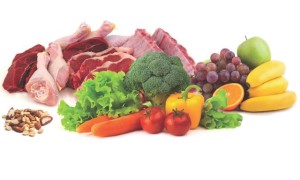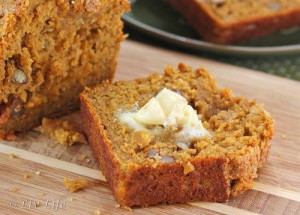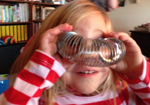 Not long ago I received a letter from someone who owns a copy of my book, The New Book of Whole Grains. She wanted to know if I could tell her whether she should give up whole grains and switch to what she called “the caveman diet.”
Not long ago I received a letter from someone who owns a copy of my book, The New Book of Whole Grains. She wanted to know if I could tell her whether she should give up whole grains and switch to what she called “the caveman diet.”
She was referring to the very popular Paleolithic Diet, named and initially popularized by Loren Cordaine, PhD. I knew very little about it at that time, so bought a copy of The Paleo Diet Cookbook and reviewed its contents. It seemed based on a reasonable premise: that modern society has strayed away from traditional foods — foods that Dr. Cordaine says “we were designed to eat” — lean proteins, fruits, and vegetables. He argues that sugar, salt, and carbohydrates have become the staples of modern diets and they were causing a host of 21st-century health issues, including obesity and heart disease. Dozens of health writers have jumped on the bandwagon, If you Google “Paleo Diet” you’ll get tons of recipes, food lists, and testimonials from its proponents.
What Can You Eat on the Paleo Diet?
You can’t eat any processed foods on the Paleo diet. And since our ancestors were hunter-gatherers, not farmers, he also removes wheat, dairy, grains and legumes (such as peanuts and beans) from the food choices. His premise is this:
The Paleo Diet is based upon everyday, modern foods that mimic the food groups of our pre-agricultural, hunter-gatherer ancestors. The following seven fundamental characteristics of hunter-gatherer diets will help to optimize your health, minimize your risk of chronic disease, and lose weight.
- Higher protein intake
- Lower carbohydrate intake and lower glycemic index
- Higher fiber intake
- Moderate to higher fat intake dominated by monounsaturated and polyunsaturated fats with balanced Omega-3 and Omega-6 fats
- Higher potassium and lower sodium intake
- Net dietary alkaline load that balances dietary acid
- Higher intake of, vitamins, minerals, antioxidants, and plant phytochemicals
Does the Paleo Diet Work?
Each of these characteristics is explained and justified on Cordaine’s website, and it’s not my intent to support or debunk them, or the diet either for that matter. However, I will quote from the April 2015 University of California, Berkeley Wellness Letter:
“Paleo diets” – high in animal protein and low in carbohydrates – are widely promoted for health and weight loss but are based more on supposition than science, since it’s impossible to generalize about what early humans ate. As discussed in a recent article in the Quarterly Review of Biology, early humans lived in ecological niches with widely varying food sources over many millennia and apparently ate whatever they could gather or kill. True, evidence suggests they rarely developed heart disease or cancer, but that’s because they usually didn’t live long enough to develop them, not because they had healthy hearts.
Why Is the Paleo Diet So Popular?
My personal belief is that the main reason the Paleo Diet has become so popular is that many people feel better when they remove food additives and other processed food from their diet. I’ve been advocating this since 1982, when I wrote Organic Cooking for (not-so-organic) Mothers.
However — there is another reason. Although gluten-free diets have traditionally been advocated primarily for people with Celiac Disease, it appears that many other people, some with inflammatory conditions or immune-system diseases such as lupus and rheumatoid arthritis, and others with neurological conditions such as MS and Parkinson’s Disease, feel some relief from pain and discomfort when they remove gluten and dairy from their diet. The exact link is not yet clear to physicians, but there does seem to be a relationship. In my own case (I have RA), I find that I eat less when I don’t hurt, and when I avoid gluten in the form of most grains, I don’t hurt. So I also lose weight on this eating plan.
Rather an ironic twist of fate for the author of The Book of Whole Grains, don’t you think?
Should You Switch to Paleo Eating?
I find it much easier to give up wheat, rye, and the other gluten-bearing grains than it is to give up ALL grains, and I feel the beneficial results with just the removal of wheat. I find it extremely difficult to avoid all dairy, although nut milk satisfies my craving for a bowl of cereal in the morning or a cold drink in the afternoon. And I take lots of calcium.
If I were to give advice I’d say if you want to try the Paleo Diet, do so, but keep a detailed record of what you eat and how you feel for several weeks. If you see improvement, in energy, pain, inflammation, etc., then perhaps there is some usefulness for you in eliminating some of these foods. Permanently. If not, then don’t bother.
Share this post




Marlene,
Nice to finally get your blog in my inbox.
I hate that what you write is, well, right. As soon as I cut down on that crunchy, seed-encrusted bread and up the veggies I feel better. I shed pounds and have a spring in my step. That’s all the evidence I need.
BUT, that doesn’t keep me from indulging every once in a while. Life is for enjoying as well as extending.
Cathy
P.S. Is there a way to have a “Comment” link from the email? Maybe add a text link in your emails… “Want to comment? Click here”??? Just a thought.
Cathy,
Yes, I have the same problem staying with a healthy regimen. I try to start over again every Monday! I like your suggestion about having a comment link right in the email; right now as you know, readers need to click on “Read this in your Browser” in order to comment. Let me play around with different ways to do it. Watch for a comment link next week!